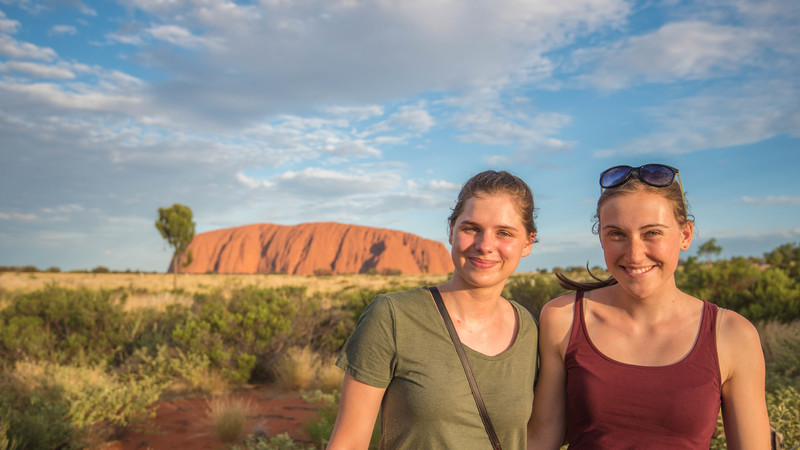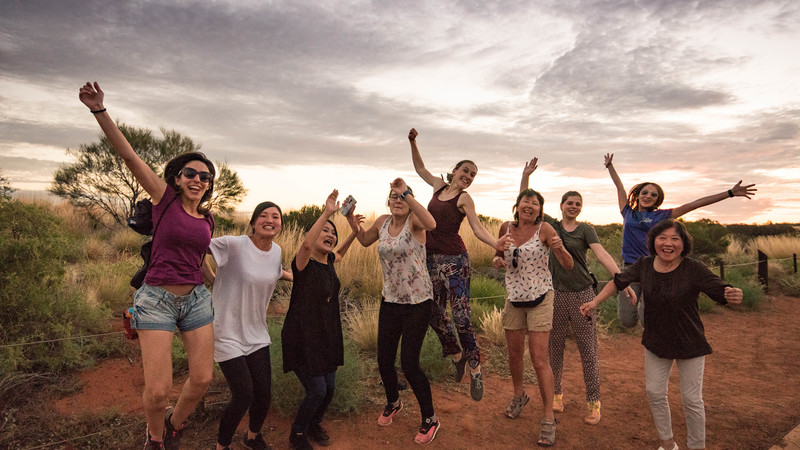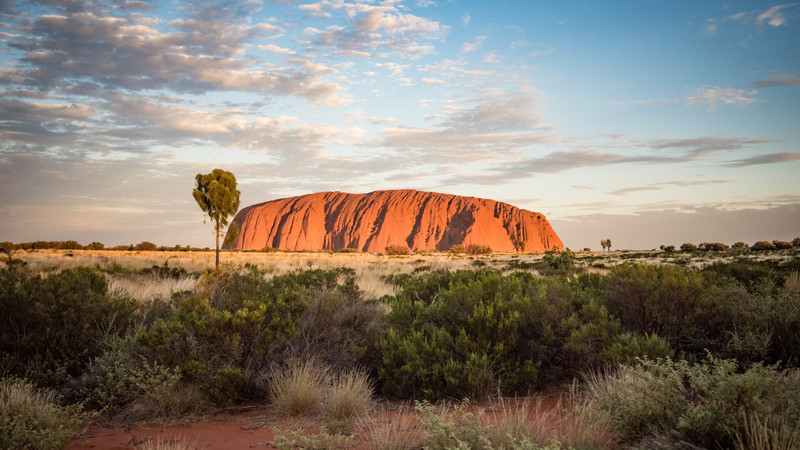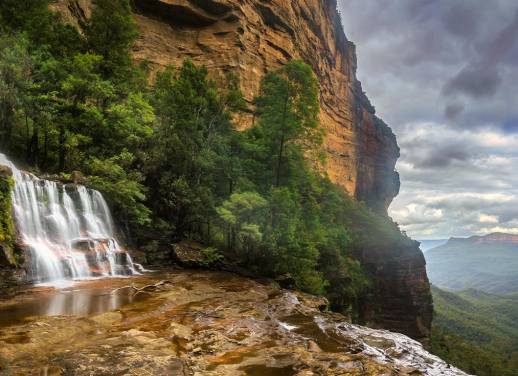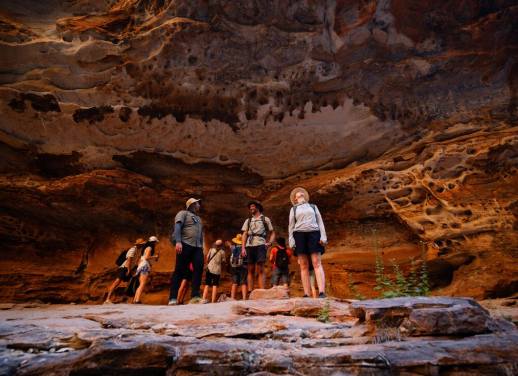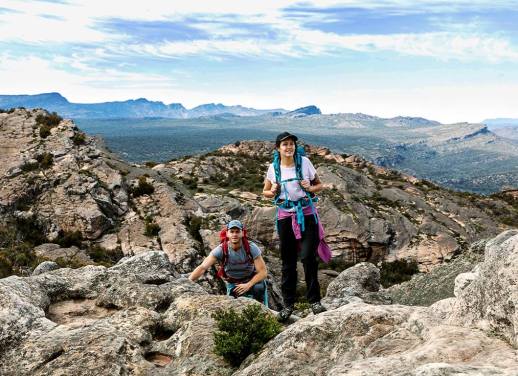This post originally appeared on Outback Yarns.
It’s 7pm and I’m watching an incredibly beautiful pink sunset over Australia’s Red Centre icon, Uluru.
As I recently moved to Mutitjulu, an aboriginal community at the foot of Uluru, I have the honour to say that the world’s biggest monolith is the view from my backyard.
How I ended up at Uluru
A little over a year ago, I decided to travel Australia on a ‘working holiday’. I booked myself a one-way ticket to Melbourne and found a job at Intrepid Travel which opened my eyes to this country’s ancient and rich culture. Last year Intrepid Travel launched a new aboriginal experience at Uluru; this is how I ended up working for their indigenous partner organisation, Maruku Arts, based at Mutitjulu community, at the foot of Uluru.
 Moving to a remote aboriginal community
Moving to a remote aboriginal community
So many questions went through my mind when I was asked to move to a remote aboriginal community, 450 kilometres away from the nearest ‘larger’ outback town. Am I going to be able to say goodbye to the city life? Who else is living out there? What’s the accommodation like? How will I cope with the heat when it gets over 40°C? After Skyping with my future teammates about my concerns, I said yes to this unique opportunity. When else would I get the chance to live and work in the heart of the country with Aboriginal artists, Aussies and other Europeans from France, Spain and England? I’ve been here for two months now and I can tell you that I’ve had zero regrets.
RELATED: ULURU THROUGH THE LENS
Why I love my job
Maruku Arts is where I’m working. (‘maru’ means ‘black (skin)’and ‘ku’ means ‘of’ – ‘of the black skin). It is a not-for-profit craft company, owned and controlled by Anangu (Aboriginal people from the Central and Western deserts), one of the oldest living cultures in the world. For 35 years, Maruku’s goal has been to benefit the artists, their families and their communities, and to play a key role in keeping the traditional cultural practices alive throughout the Anangu lands.
Maruku offers dot painting and woodcarving (punu) workshops, introductions to bush medicine, inma (traditional dance) and traditional desert tool demonstrations. The paintings and punu (woodwork) can be admired at the Maruku gallery at the Cultural Centre in the Uluru–Kata Tjuta National Park.
My job allows me to give travellers visiting Uluru the chance to learn about Anangu culture and history. I’ve been learning from Anangu, the traditional owners of the land surrounding Uluru about their ‘country’, culture, andfood. I’ve also been learning the local aboriginal language, called Pitjantjatjara, so I can interpret for the local artists leading the tours.
A typical day
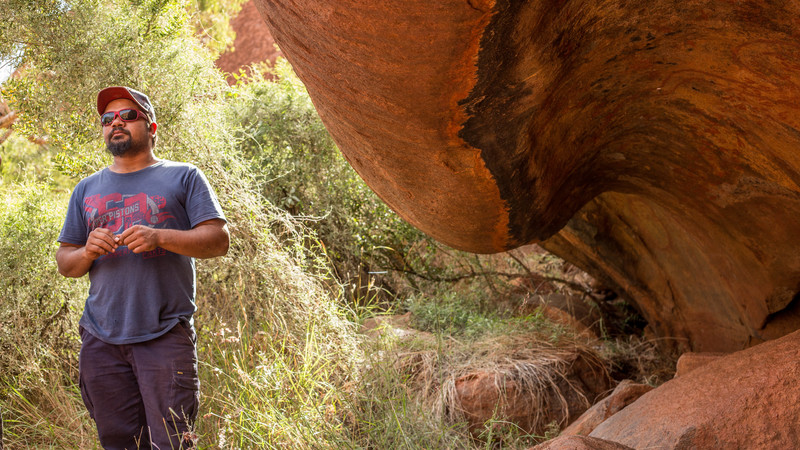 In the morning, I pick up a local artist from the community and – after our morning greeting ‘mungamungawiru’ (good morning) – we drive into the small outback town of Yulara where we give dot painting workshops. The 30 minute drive from ‘Muti’ to Yulara is always interesting; this is when the artists teach me new Pitjantjatjara words, mostly about the weather, the plants and animals surrounding Uluru, or the tjukurpa (stories) of the creation time of all living creatures and landscapes.
In the morning, I pick up a local artist from the community and – after our morning greeting ‘mungamungawiru’ (good morning) – we drive into the small outback town of Yulara where we give dot painting workshops. The 30 minute drive from ‘Muti’ to Yulara is always interesting; this is when the artists teach me new Pitjantjatjara words, mostly about the weather, the plants and animals surrounding Uluru, or the tjukurpa (stories) of the creation time of all living creatures and landscapes.
Leading workshops
Then it’s time to start the dot painting workshop. First, we teach our guests about the sand drawings of the symbols used in traditional art. Before there was pen and paper, this was how Anangu passed down their knowledge, generation to generation, for thousands of years.
We also give them a demonstration about the traditional tools used for hunting, gathering food and rituals. When attending the dot painting workshop, travellers also get the chance to create their own work of art to take home and to show their family what they’ve learned from a traditional owner of the land.
I can’t describe how special it is to be interpreting for the artists who speak their language Pitjantjatjara; and to see how much our guests are amazed by this ancient way of teaching, learning and passing on stories.
The afternoon spent at Uluru
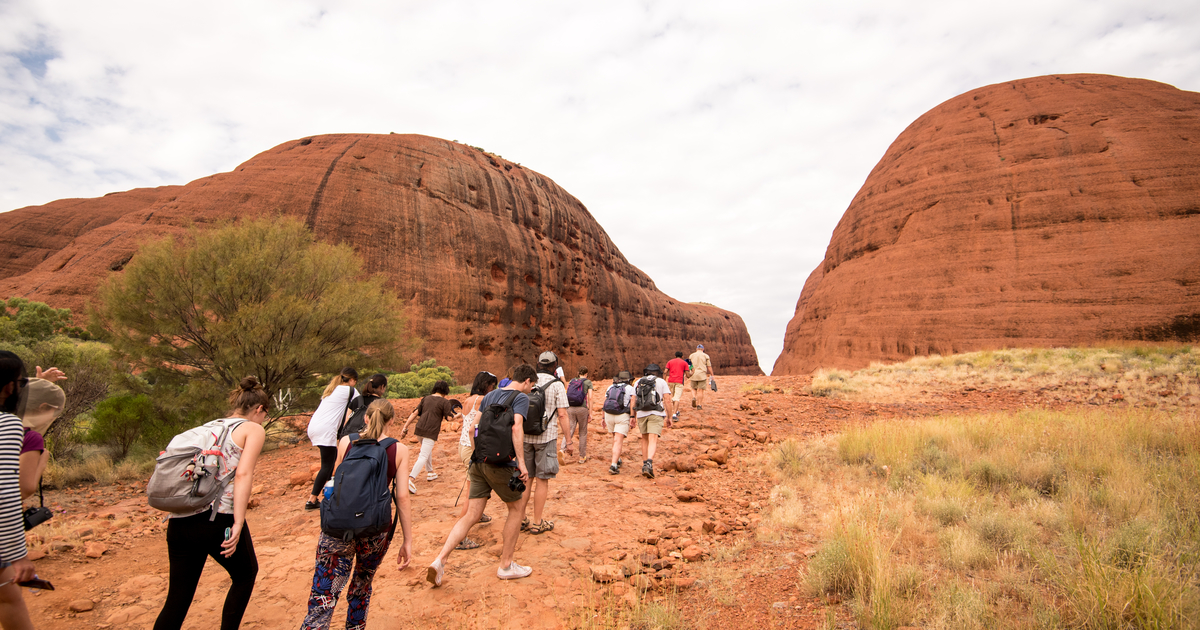 In the afternoon, we drive back into the National Park and, after enjoying our mai wiru (good food), we go out on another cultural experience. The Kuniya walk, along the Mutitjulu waterhole track, is a great introduction to the cave art at Uluru. As well as learning about the rock art in three different caves, travellers are also taught about the sand drawings of the symbols used in traditional art, and given a demonstration of the traditional tools.
In the afternoon, we drive back into the National Park and, after enjoying our mai wiru (good food), we go out on another cultural experience. The Kuniya walk, along the Mutitjulu waterhole track, is a great introduction to the cave art at Uluru. As well as learning about the rock art in three different caves, travellers are also taught about the sand drawings of the symbols used in traditional art, and given a demonstration of the traditional tools.
When I first went on this walk, I thought those initial ‘wow’ moments would quickly lose their impact if you came out here every day, but I was wrong. Knowing these rock paintings are at least 10,000 years old, and seeing the artists talk about them as if it happened yesterday, makes you realise how strong this culture still is, and how much they enjoy sharing their stories with the rest of the world.
A tough but rewarding experience
Moving to Mutitjulu has been one of the most challenging, but incredible, experiences I’ve ever had. The chance to move into a ‘donga’ with a window view of Uluru? Not a lot of people get an opportunity like that. But as someone who’s never lived in the outback, it’s also been quite intense; I’ve never had to deal with lizards in the bathtub, spiders in the donga and snakes in the backyard before this!
Working in the desert with this culture (that’s so different from mine) has also made me appreciate all the things in life I’ve taken for granted. There’s no need to check the weather app if you can ask Anangu. The sky might be perfectly clear, but if they tell you ‘kapi pitjani’ (rain is coming), you can be sure it’s going to storm. When I go on tour, the artist will always spot a lizard before I’ve even had the chance to look around. I’ve been given honey ants to eat, freshly dug from the ground. I stop talking and listen when I hear the birds singing. And I’ve learned to appreciate the feeling of a cool breeze at the end of a hot day, and that watching the colours of Uluru change at sunset is one of the most magical sights on earth.
Palya (thanks) for reading. I hope you have the chance to come visit us in Uluru one day.
Explore Australia’s rich culture in the Red Centre on a small group adventure with Intrepid.
All images by Isabelle Liekens

